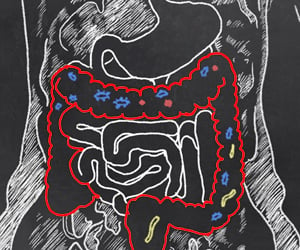Differences in a newly uncovered estrogen receptor could turn out to be an important therapeutic target besides playing a vital role in signaling other target tissues like uterus and prostate tissues.
Differences in a newly uncovered estrogen receptor could turn out to be an important therapeutic target besides playing a vital role in signaling other target tissues like uterus and prostate tissues.
These new findings could significantly advance the understanding of the effects of estrogen in breast cancer and point the way towards new and potentially more effective treatments of the disease.The new study was published this week in an advanced online edition of the Proceedings of the National Academy of Sciences.
Estrogen has long been linked to the development of breast cancer, both through the stimulation of breast cell growth, which can lead to mutation, and through estrogen metabolism, which can interfere with apoptosis and DNA repair. Estrogen receptors mediate the majority of the actions of estrogen, including the metastatic growth of breast cancer cells, and are an important marker in therapy; readable levels of estrogen receptor proteins are expressed in a large portion of human breast cells.
Professor Thomas F. Deuel, M.D., a Scripps Research scientist who participated in the study said, 'The estrogen and anti-estrogen signaling pathways mediated by this new receptor could explain why some breast cancers grow worse or become resistant to anti-estrogen therapy, specifically the drug tamoxifen, which blocks estrogen signaled responses through ER-a66 in breast tissue.' According to the National Cancer Institute, anti-estrogen therapy is most often used in postmenopausal women whose tumors grow in response to the hormone.
'Worldwide, breast cancer is the most common form of cancer in women and the second most common cause of death for women in the United States,' Deuel said. 'The toll in suffering and mortality is especially devastating because breast cancer strikes women at a time in their lives when they are most productive and they are busy with children and raising a family. This continues despite great progress in the diagnosis and development of treatment strategies in human breast cancer. Our new study may help in finding a solution to remaining critical questions surrounding the mechanisms that drive breast cancer.'
Earlier research into how hormones signal various functions in hormone-responsive tissues led to the identification of the human estrogen receptor (hER), which is mediated by specific nuclear receptors including hER-?66. However, questions regarding the functional significance of cell plasma membrane-initiated estrogen signaling in human breast cancer and in other estrogen responsive tissues remain largely unanswered.
Advertisement
'By identifying and cloning a novel form of the human estrogen receptor, our studies suggest that hER-?36 may have a greater potential to signal estrogen stimulated membrane responses than hER-a66,' Deuel said. 'The results of our experiments demonstrate that the presence of hER-?36 strikingly inhibits both estrogen-dependent and estrogen-independent transactivation functions-which result in protein production-mediated by ER-?66.'
Advertisement
These findings, the study said, support the conclusion that tamoxifen functions as both agonist and antagonist of estrogen signaling and that the expression of hER-a36 may be involved in the development of tamoxifen-resistant human breast cancer. This raises the possibility that estrogen-activated ER-a36 signaling initiated in the cell plasma membrane may actually accelerate the course of tamoxifen-resistant human breast cancer.
'The apparent ability of hER-?36 to trigger membrane-initiated estrogen and anti-estrogen signaling that leads to cell growth makes it an important new member of the estrogen signaling pathway,' Deuel said. 'Its potential to antagonize estrogen-stimulated transactivational functions transduced by hERa66 is also an important feature of the new receptor's functional responses to estrogens. Based on our new findings, further studies of this potentially very important protein are likely to significantly advance our understanding of the diverse physiological and pathological effects of estrogen action.'
Contact: Keith McKeown
[email protected]
858-784-8134
Scripps Research Institute
(Source: Eurekalert)











